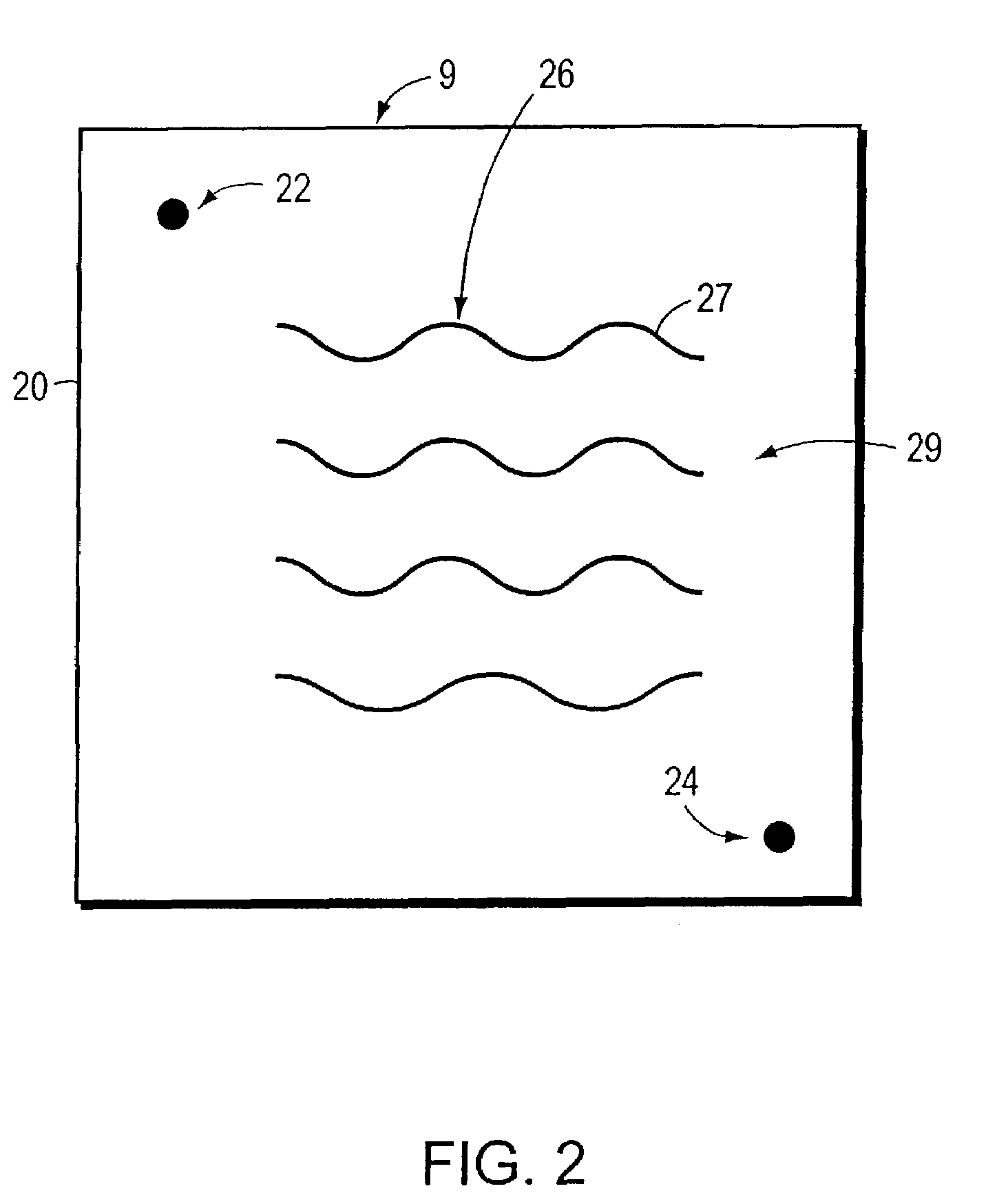System and method for authentication of a workpiece using three dimensional shape recovery
a workpiece and three-dimensional shape technology, applied in the field of workpiece authentication techniques, can solve the problems of inability to detect fraudulent copying using this technique, and inability to thwart certain types of postal franking fraud
- Summary
- Abstract
- Description
- Claims
- Application Information
AI Technical Summary
Benefits of technology
Problems solved by technology
Method used
Image
Examples
Embodiment Construction
[0036]FIGS. 1-2 illustrate features of a workpiece 1 that includes one embodiment of an authentication indicium 10 made according to one aspect of the present invention. More specifically, in FIGS. 1-2, workpiece 1 is a postal mailpiece that comprises a postal envelope whose front outer surface 11 includes indicium 10. Surface 111 also comprises written postal source address 2 (i.e., of the sender of mailpiece 1) and destination address 4 (i.e., of the intended recipient of mailpiece 1) in the upper left corner and center, respectively, of the surface 11 of mailpiece envelope 1. A postal symbol or artistic graphic 6 may also be placed on the surface 11 (e.g., in the upper right corner of surface 11 above the indicium 10, as shown in FIG. 1).
[0037]In accordance with this embodiment of this aspect of the present invention, indicium 10 includes respective markings 7, 8 provided on surface 11 of the envelope 1. Markings 7 comprises a human-readable alphanumeric text disclosing to a huma...
PUM
 Login to View More
Login to View More Abstract
Description
Claims
Application Information
 Login to View More
Login to View More - R&D
- Intellectual Property
- Life Sciences
- Materials
- Tech Scout
- Unparalleled Data Quality
- Higher Quality Content
- 60% Fewer Hallucinations
Browse by: Latest US Patents, China's latest patents, Technical Efficacy Thesaurus, Application Domain, Technology Topic, Popular Technical Reports.
© 2025 PatSnap. All rights reserved.Legal|Privacy policy|Modern Slavery Act Transparency Statement|Sitemap|About US| Contact US: help@patsnap.com



